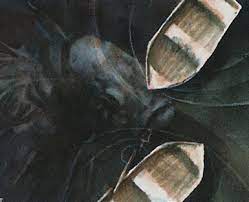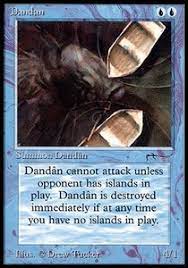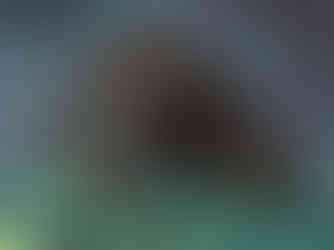Sorcery Artist Interview: Drew Tucker
- Mike Servati
- Apr 21, 2022
- 8 min read
Today we interview Sorcery: Contested Realm Artist, Drew Tucker.
Drew is one of the iconic artists in Sorcery: Contested Realm who earned fame in the TCG art industry as one of the original Magic the Gathering artists, starting with MTG's 1993 Alpha set. It is artists like Drew and the other early-era MTG artists contributing to Sorcery who initially piqued my interest in the game, reinvigorating warm memories from my childhood playing MTG with neighborhood friends.
There is a story within the interview (which Drew told in another interview that I discovered in my research on his background) that recounts a fond memory Drew has of someone who approached him at an event. This person was now an adult, and showed Drew a card that he had signed for him 25 years earlier. I have found this to be highly relatable, both personally and with others whom I have connected with in the Sorcery community. It really captures the magic of 'nostalgia', and the essence of what Sorcery is attempting to achieve with the artistic direction and stylistic choices for the game.
Drew was one of the first artists who reached out to me when I launched the Collector Arthouse website, volunteering to participate in an interview and being very gracious with his time to provide insights into his artwork. I remember how honored I felt to connect with him and receive an email from one of my childhood heroes. I am very grateful for this opportunity and would like to thank Drew for the generosity of his time and his great support, through the interview and the Sorcery: Contested Realm Facebook Fan Page Group.
Mike @ Collector Arthouse: I have asked this question of other mtg artists and am curious about each person's perspective.
Many know of you from your early career work with MTG and WoTC. One of the compelling aspects of Sorcery is the inclusion of several early MTG artists (eg Anson Maddocks, Jeff Menges, Melissa Benson, Liz Danforth, Margaret Organ-Kean, Ian Miller, and yourself). Have you kept in touch with these artists over the years on a friendship level, or collaborated with them professionally on other projects? What is it like reuniting for Sorcery? Was that part of the appeal to work the project?
Drew Tucker: I do keep in touch with some of the early artists. Weirdly, or at least I think it's weird, and it might be quite different from the rest, but most of the artists I have met have been through the cons. In the early days I was as much of a recluse as I am now.
[The images below are from last year's IX 2021 event. From left to right, you see Sorcery artists Drew Tucker, Jeff Menges, and Margaret Organ-Kean. All 3 featured their Sorcery artwork at the event. In Drew's photo, you can see several of these prominently displayed on the wall behind him]
I would like to give a shoutout to Jeff Menges and his book The Gathering: Reuniting Pioneering Artists of Magic the Gathering.

["The Gathering" is a 112-page book that was offered through Kickstarter in 2013 and led by Jeff Menges. It commemorated the 20 year anniversary of Magic the Gathering,
and included participation and
illustrations from most of the original artists for the game. Some included new illustrations that re-imagined one of their early Magic cards, while others chose to focus on their artistic development in subsequent years. Included in the project were current Sorcery artists: Jeff Menges, Drew Tucker, Melissa Benson, Liz Danforth, Anson Maddocks, and Margaret Organ-Kean.]
The appeal of working on this project was the project or Sorcery itself. I really enjoy painting and image making and I love getting the opportunity to to be part of new ideas. Having former mtg artists and friends working on the same project is just a really cool bonus.
Mike @ Collector Arthouse: You seem to be very enthusiastic about your Sorcery works, and the Sorcery game/project in general. Without leading your response too much, I will generically say that I have seen and learned what I perceive to be several corollaries to the early mtg dynamic and vibe. I am curious if you agree, and if you could compare and contrast a bit from your experience.
Drew Tucker: I do agree with you. "Corollary" describes a result that is the natural consequence of something else. I had to look that up actually, but If by Corollary you mean the result that is a natural consequence of something else I say absolutely. Part of this is due to Erik’s art direction and calling for all traditional painting and then leaving much of the creative freedom to the artists. It is an interesting way of building a vision and really fun for myself.
Mike @ Collector Arthouse: In a couple recent interviews you told a story about a fan who you signed a card for as a kid, and then 25 years later he met you again and still possessed that same card. I wonder how you might feel about TCG project artwork compared to commissions for non-TCG projects; and if, or how, you may think TCG projects are unique. For example in the sense that your TCG artwork reaches many people instead of selling just one original painting that may touch only one buyer vs cards that may be owned by many. Or perhaps the aspect of how playing a game with a card creates memory “time capsules” (nostalgia) correlating to a period in their life, similar to how an artwork done by the artist may create a memory time capsule from the period in your life when it was created.
Drew Tucker: I love that story it was a big moment for me about the “Importance” of what we do. It was big and humbling and unexpected. Your question is one of the reasons I was drawn to illustration in that it allows anyone to have a piece of art, so in a way that artwork is not limited and hopefully gets to speak to multiple people. Where private commissions are in a way just that, its private and really for an individual unless of course the image is shared out. But still, it can be a very personal thing and that is what is intriguing to me on commission work; making a piece that responds specifically towards an individual.
Commissions in a way are like pieces in a museum where they have a limited viewing life. And this probably doesn’t need to be said, but an obvious note the internet has expanded artworks viewing.
I love working commissions and really enjoy making paintings that speak directly to a person. I try to take this direction to both commissions and illustration work. In my head each image has a life to be addressed. I also have the rationale of that I want to be able to “feel” from, and relate to, the image. I think the thought is if I have an emotional response from a piece, this language will be transferred to the viewer. I'm not sure if that makes any since but it is often present.
Your explanation was the exact reason that I wanted to get into illustration even as a kid. That is how I got to see artwork; it was through books, animation, and prints that you can find and I love it. I love that illustration gets to reach so many people.
Mike @ Collector Arthouse: I saw that you (and some other MTG and Sorcery artists such

as Jeff Menges and Margaret Organ-Kean) attended IX 2021 in Reading, PA and had a few of your Sorcery paintings in your exhibition booth. Being as though Sorcery is very new and not yet well known, I am curious what fan reaction was to these works and if you sensed enthusiasm for the project.
Drew Tucker: Yes I had pieces from Sorcery at the ix and they were all well received. I think it has a lot to do with placement but the Avatar got lots of love; but I believe Unland Angler sparked the most from people. I think this one is tied so deeply to DanDan in that piece as well as in other peoples' memories.
[Drew's reference to his very popular Dandan painting for Magic the Gathering's Arabian Nights set comes up in the next question that I asked Drew, specifically relating to his Unland Angler painting for Sorcery]
I do think people are really looking forward to Sorcery coming out, both for the game and the artwork. I know that every time I see a bit pop up, like the card openings on Youtube, I stop and take awhile. It is truly exciting to see what everyone has done and how this game is coming together.
Mike @ Collector Arthouse: For Unland Angler, I am curious if the art concept hearkens back to your very famous Dandan artwork for MTG’s Arabian Nights set. Or if not, can you provide a bit of context to the inspiration for this piece?
Drew Tucker: I definitely feel like the Unland Angler is tied to DanDan. It was a strong image which I think has stuck inside people. I think this piece works a little backwards from DanDan from the boats to the hidden fish; and for the Angler from the fish to the man trapped inside.
It is a tricky painting, Dan Dan that is, and it seems to be following me around lurking under the surface and every once in a while it comes back .
Mike @ Collector Arthouse: I am aware that you have done at least 20 paintings for Sorcery so I can’t ask you to speak to them all, and they are all so stunning that I can’t possibly down select. Can you select a few that perhaps you particularly enjoyed working on, or are pleased with how they turned out, and describe a bit about your concept or inspiration for those?
Drew Tucker: Oh yes, twenty and then a few more that I am working on currently. It's hard to name a favorite; they each have all made little moments for themselves. time capsules yes? Maybe not tying it to a time and a place but more to the making of the thing and the moment; like a moment inside. There is a little something in Unland; I am not sure what was going on but painting the diver is stuck in my head...or the Men of Leng. I spent time making a little ling for reference and reading some Lovecraft.

For the Avatar painting, not only the color work and patterning in the background, but the spell that’s been cast out...that is a good moment in my head. The spell is my initials forward and backwards DATTAD over and over.
I had a friend remind me of the importance of signing artwork and I found this a great moment to try it out. Working the signature into a piece. I think it is something I want to try to adopt.
Mike @ Collector Arthouse: Do you intend to sell your original paintings, artist proofs cards, prints, and/or other products from your Sorcery works? If so do you have an idea of when and where fans can look forward to these?
Drew Tucker: I do intend on selling the original paintings as well as proofs and prints and am currently working up a catalog to post.
Mike @ Collector Arthouse: Is there anything else you would like to add about your experience with Sorcery, and/or any other projects or initiatives that you would like to endorse?
Drew Tucker: If I am going to add anything its possibly a huge thank you to you Mike for your patience with me on this interview. I do have some personal projects in the works; little illustrated short stories and such as well as a number of commercial projects that I cannot mention at this time. Which is really awesome for me to get to say.
Bonus Section:
Drew provided several process photos to include in this interview article. I did ask one question regarding the game creator's artistic direction and Drew's process for developing his concepts and paintings. Drew provided a brief response, but the story is best told through the process photos and illustrations. In a nutshell, it is a process of sketches, color study, and sometimes a maquette for reference (as shown earlier for Men of Leng)...
Maddening Bells:
Call to Arms:
Mike Servati @ Collector Arthouse and Collector Arthouse on Facebook, signing off...



































































































































Comments